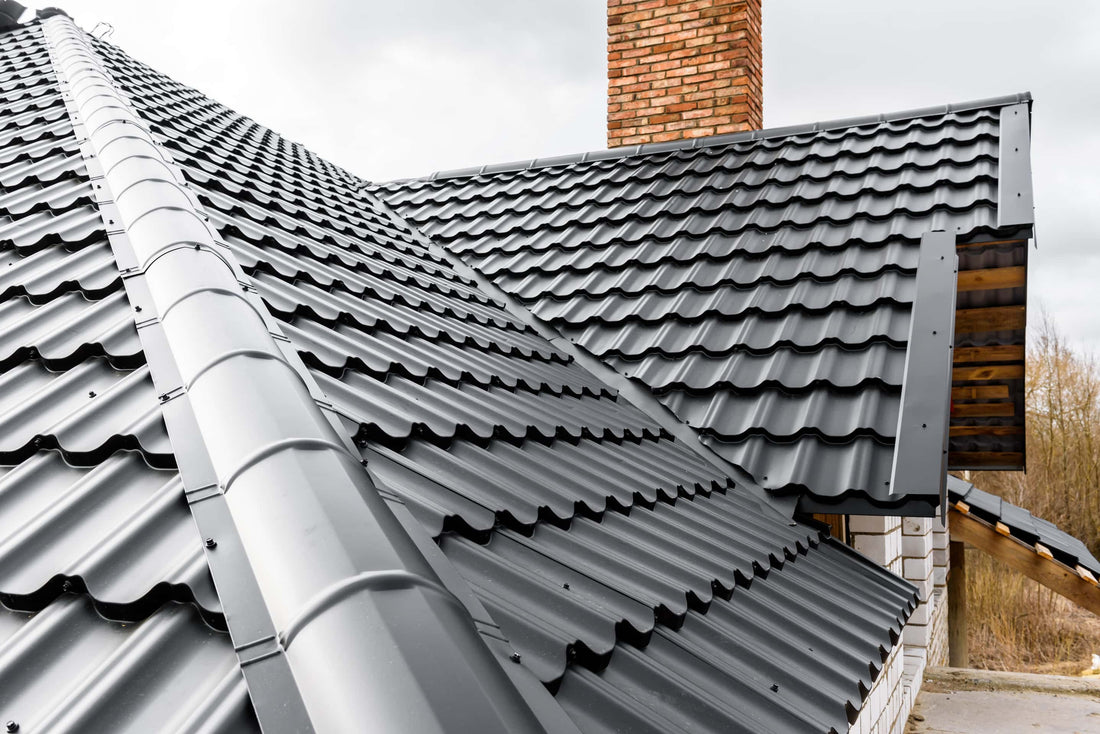
10 Key Signs You're Ready For Roof Replacement
Share
Here are some key signs that indicate it's time for customers to consider replacing their roofing:
1. Age of the Roof Asphalt shingle roofs typically last 20-25 years, while cedar shake roofs can last up to 30 years, and metal roofs can exceed 50 years. If the roof is nearing the end of its expected lifespan, replacement should be considered, even if there are no visible issues.
2. Missing or Damaged Shingles Missing, cracked, curled, or damaged shingles are a clear sign that the roof is deteriorating and may not provide adequate protection. These issues can lead to leaks and other structural problems.
3. Granule Loss For asphalt shingles, granules on the roof surface act as a protective layer against UV rays. If you notice a significant amount of granules in your gutters or downspouts, it indicates that the shingles are wearing out and the roof may need to be replaced.
4. Leaks and Water Damage Persistent leaks, water stains on ceilings or walls, or visible signs of water damage in the attic indicate that the roof’s underlayment or flashing may be compromised. This is often a sign that a replacement, rather than repair, is necessary.
5. Sagging Roof Deck A sagging roof deck is a serious issue that suggests structural problems. This could be due to prolonged water damage, rot, or a failing foundation. Immediate replacement is often required to prevent further damage.
6. Moss, Mold, or Algae Growth Excessive moss, mold, or algae growth on the roof can trap moisture and lead to roof degradation. While these can sometimes be cleaned off, their presence may indicate that the roof’s materials are no longer effective in repelling moisture.
7. Damaged or Missing Flashing Flashing around chimneys, vents, and skylights should be intact and secure. If the flashing is damaged or missing, it can lead to water infiltration. Older roofs with tar or cement flashing may benefit from an upgrade to metal flashing, which is more durable.
8. Increased Energy Bills A roof that is no longer providing proper insulation or ventilation can lead to increased heating and cooling costs. Replacing an old or damaged roof can improve energy efficiency and reduce utility bills.
9. Exterior Light Showing in the Attic If daylight is visible through the roof boards in the attic, it’s a clear sign that the roof needs attention. This indicates that the roof is no longer providing a solid barrier against the elements.
10. Worn-Out Roof Valleys Valleys are one of the most critical areas of the roof as they handle a large amount of water runoff. If shingles in these areas are missing or damaged, it can lead to leaks and necessitate a roof replacement.
1. Age of the Roof Asphalt shingle roofs typically last 20-25 years, while cedar shake roofs can last up to 30 years, and metal roofs can exceed 50 years. If the roof is nearing the end of its expected lifespan, replacement should be considered, even if there are no visible issues.
2. Missing or Damaged Shingles Missing, cracked, curled, or damaged shingles are a clear sign that the roof is deteriorating and may not provide adequate protection. These issues can lead to leaks and other structural problems.
3. Granule Loss For asphalt shingles, granules on the roof surface act as a protective layer against UV rays. If you notice a significant amount of granules in your gutters or downspouts, it indicates that the shingles are wearing out and the roof may need to be replaced.
4. Leaks and Water Damage Persistent leaks, water stains on ceilings or walls, or visible signs of water damage in the attic indicate that the roof’s underlayment or flashing may be compromised. This is often a sign that a replacement, rather than repair, is necessary.
5. Sagging Roof Deck A sagging roof deck is a serious issue that suggests structural problems. This could be due to prolonged water damage, rot, or a failing foundation. Immediate replacement is often required to prevent further damage.
6. Moss, Mold, or Algae Growth Excessive moss, mold, or algae growth on the roof can trap moisture and lead to roof degradation. While these can sometimes be cleaned off, their presence may indicate that the roof’s materials are no longer effective in repelling moisture.
7. Damaged or Missing Flashing Flashing around chimneys, vents, and skylights should be intact and secure. If the flashing is damaged or missing, it can lead to water infiltration. Older roofs with tar or cement flashing may benefit from an upgrade to metal flashing, which is more durable.
8. Increased Energy Bills A roof that is no longer providing proper insulation or ventilation can lead to increased heating and cooling costs. Replacing an old or damaged roof can improve energy efficiency and reduce utility bills.
9. Exterior Light Showing in the Attic If daylight is visible through the roof boards in the attic, it’s a clear sign that the roof needs attention. This indicates that the roof is no longer providing a solid barrier against the elements.
10. Worn-Out Roof Valleys Valleys are one of the most critical areas of the roof as they handle a large amount of water runoff. If shingles in these areas are missing or damaged, it can lead to leaks and necessitate a roof replacement.
